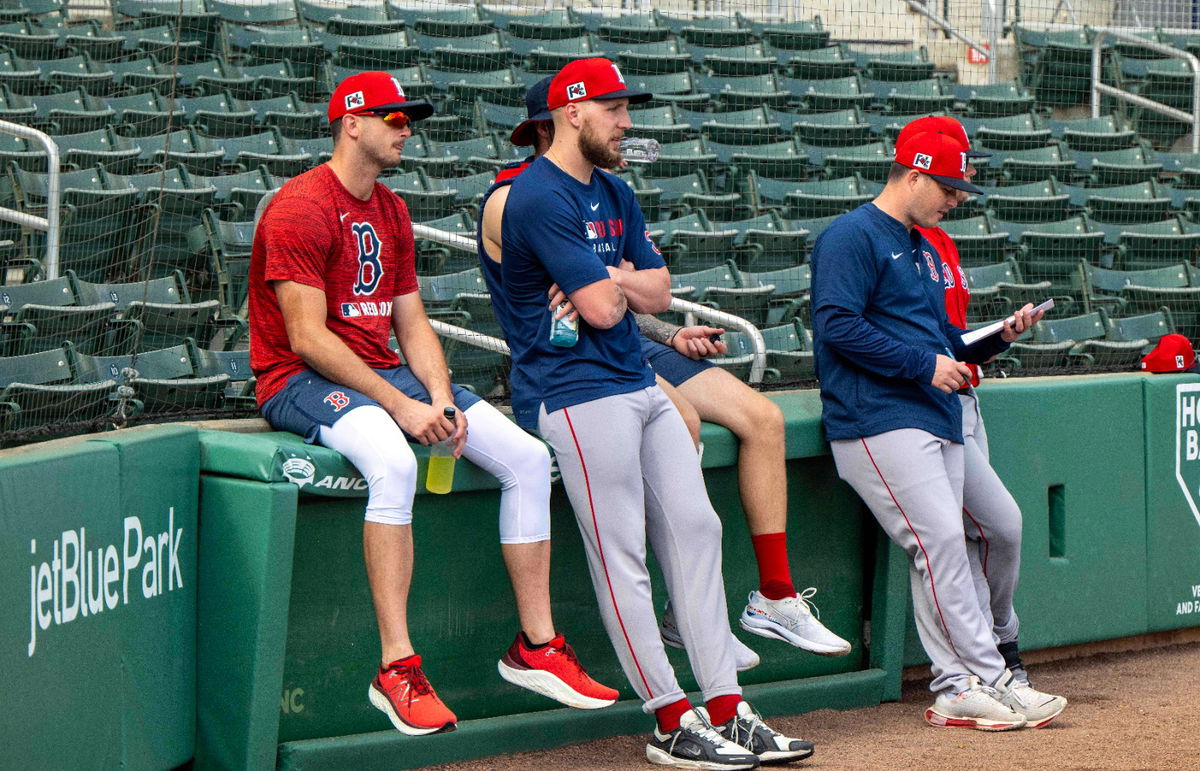Technology
The rise of tiny Texas town that became the 'pumpkin capital of America' and grows up to 3 million a year
Tim Assiter was around 10 years old when his father started growing pumpkins on their farm in Floydada, Texas, at the suggestion of a local legend, who had done the same a decade before.
'When we first started raising pumpkins, we just loaded semi-trucks loose with pumpkins, they weren't in boxes. We sold them to the metropolitan areas,' Assiter, 72, told the Daily Mail.
'We've continuously grown pumpkins since that, making us maybe the oldest pumpkin farm in Floydada.'
The small town of 2,500 residents in the High Plains region has carried the moniker of being the Pumpkin Capital of America since 1987, after the town's Chamber of Commerce recognized it for the millions of pumpkins grown there.
At its peak, the town, which is located near Amarillo, had 35 growers across thousands of acres. But that has dwindled to just three, including Assiter.
'I think we raise about almost as many pumpkins due to improved irrigation and technology as we did in the mid-1990s,' he said.
Although he doesn't have an exact number of how many of the gourds are grown in the town, he estimates it to be 2.5 million to 3 million.
The 72-year-old grows more than 200 varieties of pumpkins across 40 acres, from Jack-o'-Lanterns to those that can weigh hundreds of pounds.
'We [the Assiter family] are recognized as the face of the pumpkin in the Pumpkin Capital of America,' Assister said. 'We take a lot of pride in it.
'What makes me happiest is seeing kids leave with a pumpkin and a big grin,' he told Daily Mail. 'We have built a tradition for 25 years.'
In 2000, the family built a red barn on the grounds of the farm and began inviting people to visit and 'experience a pumpkin patch.'
Since then, they've joined in on the Punkin Day festival, which happens annually in fall, and allows families and residents to enjoy the 40 acres of pumpkins for free.
His grandchildren, four and seven, of Dallas, also help out on the farm during pumpkin season.
Pumpkins, squashes, and gourds are the only vegetables Assiter grows on the 750-acre farm. The fields not used for the orange October staple are leased to other farmers, he said.
He has pink pumpkins and green ones, white and red, and even those with warts on them.
They begin planting in May, so the first harvest will be ready by late August to early September, so the 'nervous housewives' eager for fall can decorate their porches with them, Assiter told The Daily Mail.
And although visitors to the farm are excited for all things Halloween, Assiter himself passes on the holiday.
'I've been on my farm for four weeks, seven days a week. I haven't come in from the barn before 8.30pm or 9pm. If you loaded these pumpkin trucks seven days a week, by the time we get to Halloween, we are pretty tired of it,' he told the Daily Mail.
'It's so labor-intensive.'
But don't think the 72-year-old will be retiring anytime soon.
'I probably need to [retire], I can't do what I used to,' he admitted. 'But can you quit? No, it's in your blood. It's like rodeo or golf or skydiving or flying or whatever, it gets in your blood and you want to stay with it, that tradition is there.
'It's a very satisfying, yet taxing and demanding tradition.'
His daughter, 53, also has a porch concierge service, where she takes Assiter's homegrown goods straight to families' doors to decorate.
His grandson also delivers the pumpkins to HOAs and other places in Dallas.
The farm is on his fifth generation, but it only got started after BA 'Uncle Slim' Robertson, who also was known as the Pumpkin Man, suggested to Assiter's father to start growing the gourds in the 1960s.
Robertson had started growing a five-acre patch in the 1950s and set up a roadside stand to sell them, quickly becoming a popular hit.
'He wasn't kin to us, but he was like a mentor to my father,' Assiter said. Robertson and Assiter's father became close after the latter's father died when he was 16.
The farm's pumpkins are now shipped across Texas. Oklahoma, Arkansas, and Louisiana.
Despite housing the so-called Pumpkin Capital of America, Texas is not the biggest producer of the gourd in the US. That belongs to Illinois, which harvests more than twice as many pumpkins as the other top states.
Morton, Illinois, is considered the Pumpkin Capital of the World, as 85 percent of the world's canned pumpkin comes from there.
Illinois has 15,400 acres of pumpkins, followed by Indiana, Pennsylvania, California, Michigan, and Washington.
Texas is, however, among the top 10 states in pumpkin production.
Assiter believes both places deserve their moniker for different reasons.
'We do not can anything,' he said of Floydada's pumpkins. 'But our pumpkins have a reputation.
'I think both places have the right to be a pumpkin capital. Our pumpkins have a reputation that is well known across the United States, but mostly in New Mexico to Louisiana.
'It's a tongue-in-cheek argument.'
The existence of the pumpkin in Floyd County, where Floydada is located, dates back to the 1540s when Spanish explorer, Francisco Vázquez de Coronado, and his crew were exploring the area.
His starving expedition was fed roasted pumpkin by Native Americans near Blanco Canyon, which is not far from one of Assiter's farms.
Last weekend the town had a grand show of pumpkins on Punkin Day, as plentiful rainfall yielded a good harvest, Ryan Crowe, executive director of the Floydada Economic Development Corporation, told the Lubbock Avalanche-Journal.
Twenty million pounds of pumpkins were seen at the festival, which included a chucking contest, where festival-goers threw the gourd as far as they could.
Texas generates around $2.4million in commercial pumpkin production, according to the United States Department of Agriculture.













